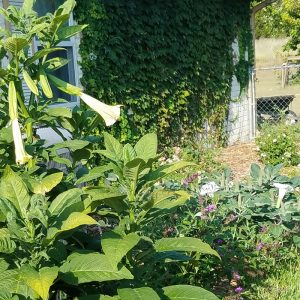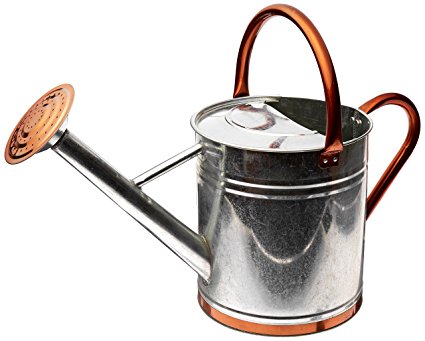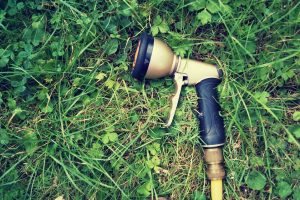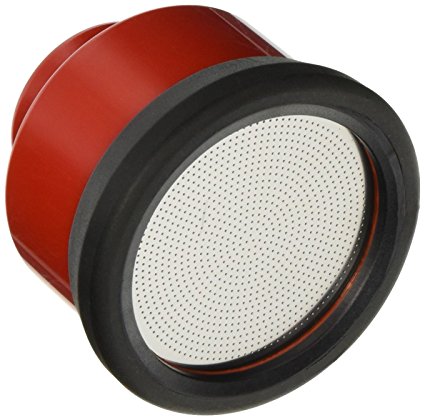 Are your plants just not happy and you don’t know why–? It could be that you’re watering wrong.
Are your plants just not happy and you don’t know why–? It could be that you’re watering wrong.
But–HOW can you water “wrong”? You just put water on the plant and you’re done, right? Well, not exactly.
Especially in a drier climate, or if you’re watering potted plants, there’s a technique you’ve got to follow if you want your plants to thrive instead of just barely survive.
I’ve learned this technique from a master gardener and professional horticulturalist of over 20 years. Since I’ve been using it, my gardens are happier and grow faster, too!
So what’s the secret technique?
You’ve got to water each plant three times per watering session.
When you first begin watering your plants, watch the soil to see how much of it penetrates the ground, and how much runs off.
If you see bubbles coming up out of the soil, or water beading/pooling on top, your soil is very dry. One pass with the hose is not going to cut it! You’ve got to get the water down into the root zone, where the plants can use it and store it.
Now, point the hose elsewhere, and wait a few minutes for the water to soak into that area. On the first pass, not much will soak in, but it will soften the hard crust and allow more water to penetrate on your second pass.
After a few minutes (or up to 20), go back and water a second time. The water will be able to get into the soil much better now. You should see it soak into the mulch (you’re using mulch, right??) instead of running off or beading up.
 Get this Galvanized Watering Can with Copper Accents here on Amazon!
Get this Galvanized Watering Can with Copper Accents here on Amazon!
Wait another 3-20 minutes, and then go back and water a third time. Now the water should soak right in. You may be tempted to skip the third pass–but THIS is the most important watering!
This time, you’re able to get deeper into the root zone (the top 18 inches of soil, where the feeder roots are), and the soil will be moist enough to soak up and hold onto water much better.
If you only water your garden beds or flowerpots once, you’re losing a LOT of that water to surface runoff and evaporation. Hardly any of it will be able to flow deeply into the root zone.
Soil is like a sponge, and it needs to be slightly damp in order for a watering to penetrate deeply, down to the roots!
 Other watering tips:
Other watering tips:
- Check the type of nozzle you’re using. Many garden nozzles (like the trigger kind with 9 different spray patterns) actually restrict water pressure and flow rate–they’re designed to save water. (I only use the “mist” setting on those, for watering the most tiny and delicate of seedlings, still in flats in the greenhouse.)
On the one hand, too much pressure means you’ll blow your tender plants away and disturb the soil.
However, a low flow rate means you’ll have to stand there longer to actually get enough water in your garden. Commercial nurseries know that you need both a gentle pressure nozzle AND a high flow rate.
The absolute best watering nozzles I’ve found for gardening are Dramm 1000-hole nozzles. They don’t have fancy options, but they provide a very gentle pressure–and they have a flow rate of 11 GPM. That’s eleven gallons per minute–which means you’ll be done watering in no time!
 Get this Dramm 11000 1000PL 11 GPM Plastic Water Breaker Nozzle here on Amazon!
Get this Dramm 11000 1000PL 11 GPM Plastic Water Breaker Nozzle here on Amazon!
- And finally–use mulch! Mulch is like a blanket for your soil.
It cuts down on evaporative water loss (and weeds!), it feeds your soil with decaying matter, and it provides a home for beneficial insects. Mulch is also absorbent, which means that even more water is being soaked up for later use by your plants. A layer of 2-4 inches is what most gardeners would call “a lot”–but use more. In fact, even double that is just fine.
Just don’t put the mulch right up against your tree trunks–“mulch volcanoes” can actually cause fungus and rot.
So, to recap:
- Water three times
- Use a gentle, high flow rate nozzle
- Mulch!




